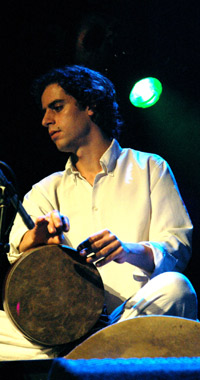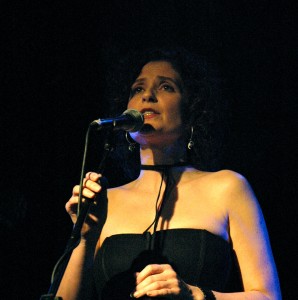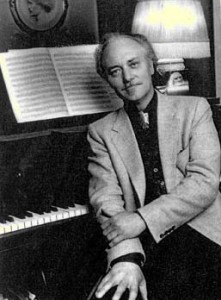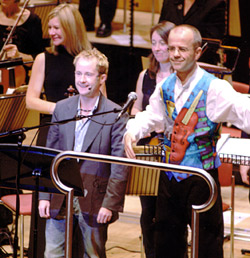The Herald
Savourna Stevenson is about to premiere her first orchestral work, a Scots tale of monsters and legend. By Michael Tumelty
BY her own admission, Savourna Stevenson is feeling “a bit desolate” at the moment. With the completion of Misterstourworm – The Kelpie’s Gift, her first piece for full symphony orchestra, the renowned harpist and composer has reached the end, or rather is approaching the climax, of a project that has dominated and permeated her creative life for two years.
She is in that peculiar hiatus between having put the last dots to her new work, which will be premiered this weekend by the RSNO, and hearing what the music actually sounds like. Nothing there, you might think, that hasn’t been experienced by every composer who pours his or her thoughts into a score, then wonders if the music will come off the page and spring into life. Yet, for Stevenson, whose new, 14-minute orchestral work will be played in Magic and Monsters, the first concerts of the new season by the Children’s Classics Concerts organisation, it represents a major move in her career, one of those “hold your breath” moments.
On the one hand, it’s a new step, and she has done “nothing like it before”. On the other, it is a conscious attempt to “pull together” many of the multiple strands of the music that has featured throughout her diverse career.
A narrative tale with music, built around the legend of the creation of Orkney and the Hebridean islands, Misterstourworm is the fruit of a Creative Scotland Award, whose handsome financing of (pounds) 25,000 has enabled Stevenson to undertake the “once in a lifetime” opportunity of moving into the territory of the symphony orchestra, and taking with her her long-time associates and close collaborators, writer Stuart Paterson, who has scripted the children’s tale, and actor Billy Boyd, who has gone on to big- screen fame through his Hobbit character in Lord of the Rings, and who is stepping off the publicity machine for the third film to return to his native Scotland and narrate the story in the two performances this weekend.
The tale of monsters, myths, and legends, which is written to through-composed music with narration, draws extensively on Scottish music influences and is consciously trying to avoid the Peter and the Wolf syndrome by resisting characterisation through individual instruments.
There is another element that, for Stevenson, adds an edge to the new experience of writing for symphony orchestra. She seems consciously not to make a big deal of it, but her conversation is peppered with references to her father, the veteran classical composer, Ronald Stevenson. “I suppose I’ve been running away all my life from what my father’s been doing; and now here I am doing it.”
She has, of course, shown the score of Misterstourworm to the great man, who, she says, has expressed nothing but support. That he is a major influence on her musical life is beyond question. As the musician in a family of three children – with actress Gerda her sister, and violin-maker Gordon her brother – Savourna Stevenson has always been conscious of the presence of her composer father.
Even as she became established in working with front-line names in traditional music, including Aly Bain, June Tabor, Martin Carthy, Fairport Convention, and Eddi Reader, she was aware that she wanted resolutely to plough her own furrow, through her compositions and what she calls her “quest for the harp”.
It goes way back. “I was desperate to find my own musical niche as a teenager. I lived with a fear: can I do things? I also lived with a demand for perfectionism from my father. Though I was always encouraged, and always received helpful advice, I guess I kicked away from it.
“I’ve spent a lot of time trying to make the harp a contemporary instrument. I never wanted it to be a museum piece, which is why you’ll find me doing things like pitch bends or strumming the strings.”
That questing approach to the instrument and the music has led Stevenson to the remarkable tapestry of musical diversity with which she is indelibly associated.
With the encouragement of musical colleagues, she has “dared to go bigger and further, to learn about other instruments and work in different areas”.
She has worked with wind and brass instruments in a jazz context. She’s worked extensively with Womad, the World of Music, Art, and Dance. For almost 20 years she has worked in music theatre, allied to scriptwriter Stuart Paterson, in shows at the Royal Lyceum and Dundee Rep. She is closely associated with music education.
And she has composed. Her Tweed Journey, the tracing of a musical river from source to sea, was commissioned by Judy Steel. In a number of her commissions, she has worked with words by Robert Louis Stevenson and John Buchan. In her String Quintet, which has developed an off-the-wall life of its own in a very peculiar context, she used the classical format of the string quartet, plus harp.
What she wanted to do in her Creative Scotland project, which has resulted in Misterstourworm, was “to dare myself to pull these strands together, write for orchestra, and to produce something not concentrating on the harp as an instrument”.
She wrote the piece on keyboard, with advice from a composer colleague, then orchestrated it with further advice and help from a friend who is a professional orchestrator working in the film business.
She found it a massive task, which entailed setting aside other work, and isolating herself from many of her other musical interests. The exercise was complicated by the fact she has a young family, including an 18-month-old baby. How did she cope? “Stress and panic,” she says, unhesitatingly.
As demanding as she has found the project, it has clearly whetted her appetite. She hopes the new piece will be a “useful” addition to the repertoire, would be intrigued to write for orchestra again, and has a strong inclination also to write for voices, particularly choral voices.
She also has an eye on her string quintet, which she has a notion to re-orchestrate for a fuller string orchestra.
That quintet, meanwhile, has developed its own context (not least as a nice little earner) by being requested by and licensed to Sex and the City for use in the steamy tv series. “There’s nothing quite like the street cred you get when your young son runs into the room shouting, ‘Mum, you’re on Sex and the City again’.”
Magic and Monsters, sponsored by Caledonian MacBrayne. Saturday, Royal Concert Hall, Glasgow; Sunday, Usher Hall, Edinburgh. Both performances at 3pm



 ction to my music from the orchestral players, maybe there’s something new for them in the fact that I started out in traditional music, with the likes of Fairport Convention and Aly Bain, and have been involved in world music and jazz. Hansel and Gretel also has a strong East-European element.”
ction to my music from the orchestral players, maybe there’s something new for them in the fact that I started out in traditional music, with the likes of Fairport Convention and Aly Bain, and have been involved in world music and jazz. Hansel and Gretel also has a strong East-European element.”